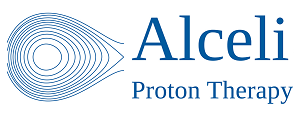There are already more than 100 proton beam therapy centres in the world, with many more coming on line every year. As an example, in the UK, a Center in Manchester has recently been completed, while one in London is being built. Together they will be able to treat about 1500 patients a year when fully operational in 2020. But these are large, expensive facilities, costing a total of £250M to build. Each patient treatment will cost around £50,000. This currently represents half the cost of sending someone abroad for treatment.
Proton Therapy is an advanced type of therapy to treat cancers, that destroys tumours with little damage to the surrounding tissues. Used for many cancers that have not spread, it is particularly effective for certain types for which conventional treatments are not so effective.
Brain Tumours
Some brain tumours that are located close to the optic nerve or specific brain areas, can cause severe damage to healthy tissues.
They are hard to remove by surgery and conventional X-ray therapy.
Proton Therapy is especially recommended for these cases.
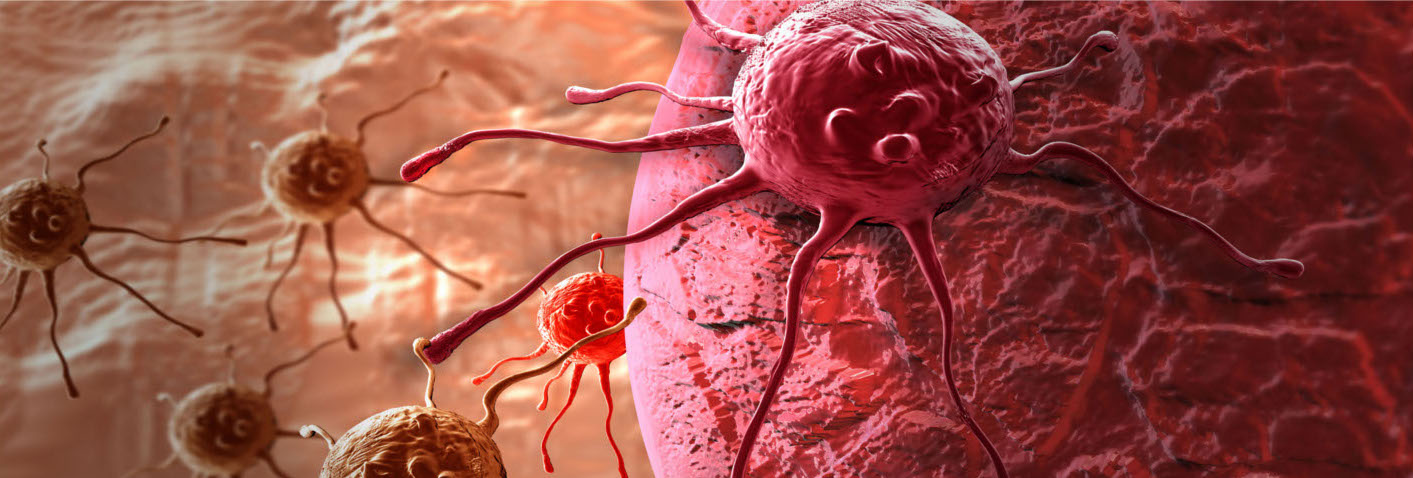
Paediatric tumours
Because children are especially susceptible to radiation damage of their young cells, putting the dose in the wrong place is an issue of particular importance. Even though the tumour gets destroyed, it can cause learning difficulties.

Second Chance
Proton therapy can be used to retreat tumours for which conventional radiotherapy has failed. This gives a second chance for a cure when other options for a patient are exhausted.
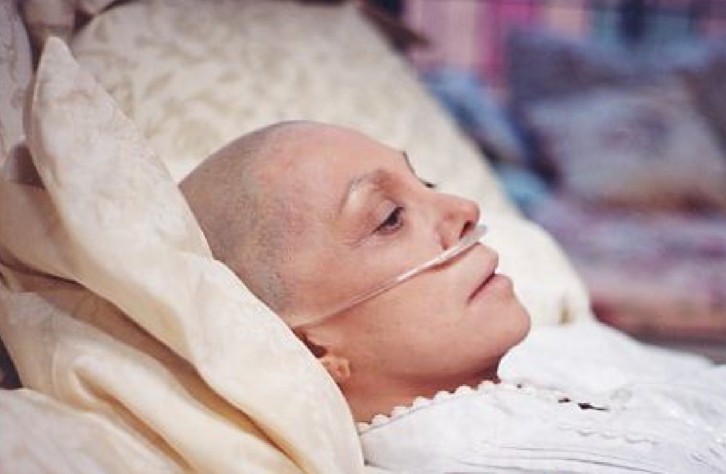
How does it work?
Treating tumours with Protons Therapy requires a particle accelerator: a large device that increases the speed and energy of subatomic particles. There are three types of accelerators used for Proton Therapy:
- Cyclotrons: the oldest technology that is still in widespread use around the world.
- Synchrotrons: a much more advanced technology, that requires more space, and is more expensive.
- Linacs: representing the next generation of accelerator technology used for Proton Therapy, they combine many of the technical advantages of synchrotrons at a more affordable price, comparable to (or cheaper than) cyclotrons.
When the protons interact with the tumour they damage the tumours DNA, stopping its ability to reproduce and grow.
Bragg Peak
With X-rays, a lot of damage is done to healthy cells, as X-rays interact with all tissues, in front and behind the tumour.
With protons on the other hand, almost all damage is done to the tumour itself, while healthy tissues are spared.
This is due to a property specific to protons, that leave all their energy at the very end of their travel through matter. Hence, no damage is done to the tissues behind the tumour, very little is done to the tissues in front of the tumour, but all the proton energy is deposited in the tumour.
This is the Bragg peak.
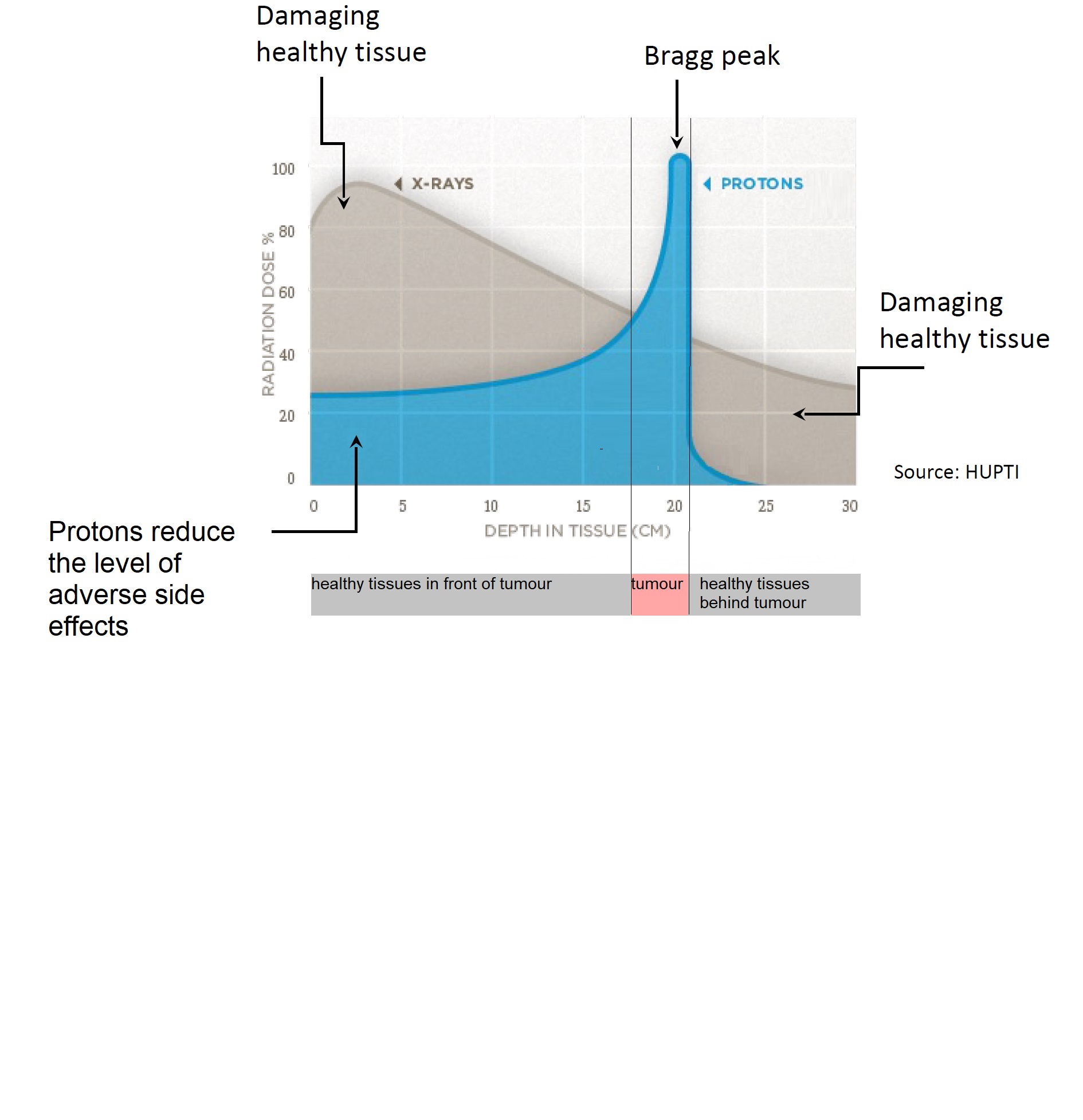
Spot Scanning
Our machine destroys the tumour by scanning it with the proton beam in three dimensions.
Magnets scan the beam along the vertical and horizontal axis.
Varying the proton energy provides depth control of the Bragg peak.

Proton Therapy causes less harm
Proton therapy delivers most of the dose in the tumour, and much less in critical surrounding organs. This is because the location of the dose delivery can be controlled in three rather than two dimensions.
Healthy cells on the path of the particles through the rest of the body are not damaged.

What’s Next?
The Paul Scherrer Institute (PSI) in Switzerland has been treating patients with protons for over 15 years. They have made major advances in proton therapy, including the development of spot scanning, which ALCELI uses. This image is of a gantry at PSI used to get optimal beam angles. But gantries are not so important with protons as with X-rays, because of the control protons offer in depth, thanks to the Bragg peak. Good results compared to X-rays can be achieved in most cases without a gantry.
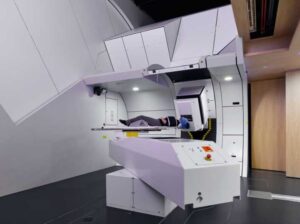
Advanced Synchrotrons like this one at CNAO in Italy, can treat with protons or carbon ions, allowing treatment of radio resistant tumours. But these machines are very complicated and expensive. Only about 10% of cases need referrals to carbon capable centres such as this.
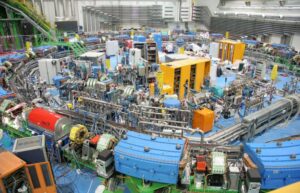
Many more centres are needed worldwide.
Lowering the cost per treatment will allow centres to be located closer to where patients live, avoiding lengthy and expensive time away from home.
